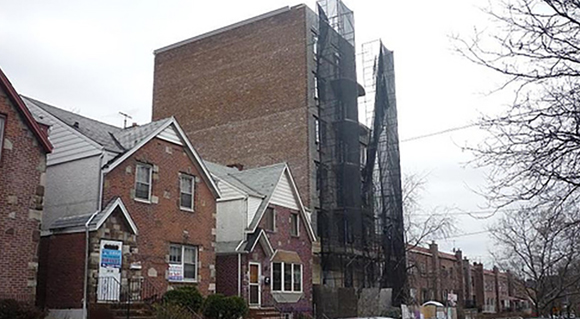The Department of City Planning (DCP) has spent the past year working on a citywide zoning proposal which they purport will respond to the lack of affordable and senior housing in New York City. Throughout the document, several terms are used repeatedly: modernize, optimize, enhance, best practices, flexibility and reduction/elimination of obstacles. In planner-speak, all of these words mean to do away with or eviscerate the very things that civic organizations, community boards and other groups have fought for – sometimes for decades – to protect our neighborhoods from out-of-scale and inappropriate development.
This remarkable, Real Estate Board of New York (REBNY)-driven document is a total violation of the expectations of rational and reasonable development in contextual neighborhoods throughout New York City. Where the term “balance” has often been used to describe the give and take of development practices throughout New York City, the proposed changes to development practices in the Draft Scope of Work can only be described as a giveaway to developers under the guise of promoting increased affordable and senior housing. In fact, many of the proposed changes have nothing to do with either and are included to help developers realize more buildable floor area in their projects. In other words, there is no “balance” in this proposal whatsoever.
Throughout the document, the DCP has stated that the “With-Action” – or approved – scenario will have the same effect as a “No-Action” – or not approved – scenario, because “the increment would be small and spread throughout the city.” This is a disingenuous statement; if the zoning regulations are changed throughout the city in multiple zones in order to facilitate increased development, then, without question, increased development will occur throughout New York City.
Across the board, if these proposed changes are adopted, they will create buildings that will be higher, bulkier and have more units as-of-right – and even more so for affordable and senior housing – across the city.
The key areas that are being discussed are senior housing and elderly care facilities; changes to building heights, setbacks and other regulations; and affordable housing.
1. Senior Housing and Care Facilities
According to this document, the approach to increasing senior housing is two-fold; allow for bigger and bulkier buildings with an increased number of dwelling units and reduced or total elimination of parking requirements. Additionally, the Department of City Planning is proposing to eliminate special permits and other certificates which are needed to operate elderly care and nursing home facilities and, in a new twist, essentially allow the merging of housing and care facilities.
The new zoning for senior housing is meant to encourage developers to buy up rows of single, 2 and 3-family homes and replace them with relatively huge 5-story buildings containing multiple dwellings. Your low-rise neighborhoods will be decimated (see photo, upper left).
2. Changes to Building Height, Setbacks and other Regulations
Under the proposed actions, many contextual zoning controls created in the early 1990s will be reduced significantly or even eliminated entirely; in other cases, such as protective controls in the city-wide Yards Text Amendments which were passed in 2007, these will be eviscerated to the point of being meaningless. Some of the proposed as-of-right changes to non-inclusionary or senior housing (meaning, regular as-of-right development) include:
Increasing the maximum streetwall and maximum overall height of buildings within contextual zoning districts anywhere from 5’ to 15’ as-of-right. This will result in at least one additional floor per building.
Changing the formulas of minimum square footage required for a legal apartment in order to create “micro-units” of 275 square feet.
3. Affordable Housing
According to this document, the approach to increasing affordable housing is similar to senior housing; allow for bigger and bulkier buildings with an increased number of dwelling units and reduced or total elimination of parking requirements. This includes:
Allowing accessory uses, such as laundry rooms, recreation space, trash rooms and mechanicals to be built in the rear yards of buildings up to 15’ in height, which are normally required to left open for light, air and space between buildings.
Changes to Parking Requirements:
Under the proposed actions, off-street parking requirements would be severely reduced or eliminated in most residential districts:
Within the “Transit Zone,” all qualifying affordable housing would be able to eliminate any parking requirements, regardless of the residential zone in question. Developments that have some affordable units would also be able to reduce and possibly eliminate parking requirements.
High density zones would have no parking requirements, near or far from transit.
Lower density zones would lower parking requirements to 10% instead of 85%-100% of units.
All future buildings with a mix of affordable and non-affordable units would be eligible to have reduced parking requirements on a case-by-case basis.
Higher density zones which currently have affordable housing within the “Transit Zone” would be eligible to retroactively remove parking requirements on a case-by-case basis through discretionary action by DCP/DOB. This would free up “surface parking lots” which are currently required for senior housing to be eligible for new development.
I suggest that you call your council member and express your concern about this proposal. The City Council will have the ultimate say over whether or not this is passed into law. Maspeth, Middle Village, Glendale and other neighborhoods throughout the city did not spend years working with City Planning to get their neighborhoods rezoned just to have them all undone with one stroke of the pen.




